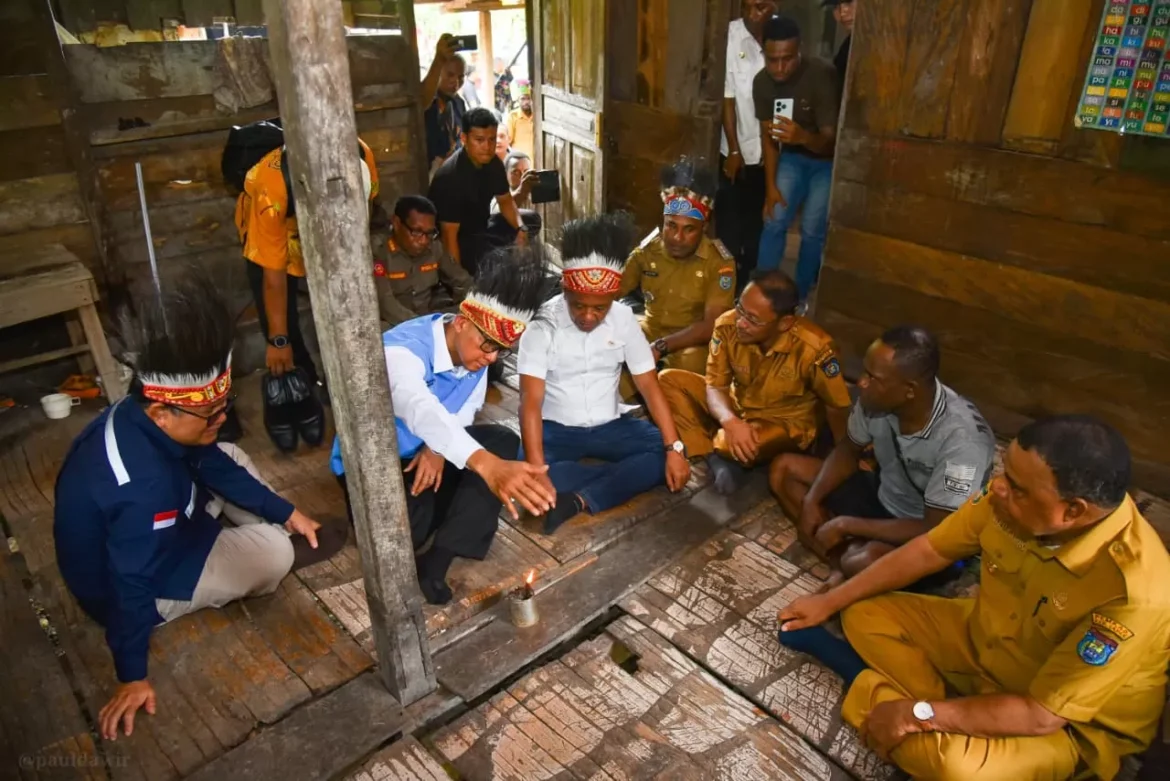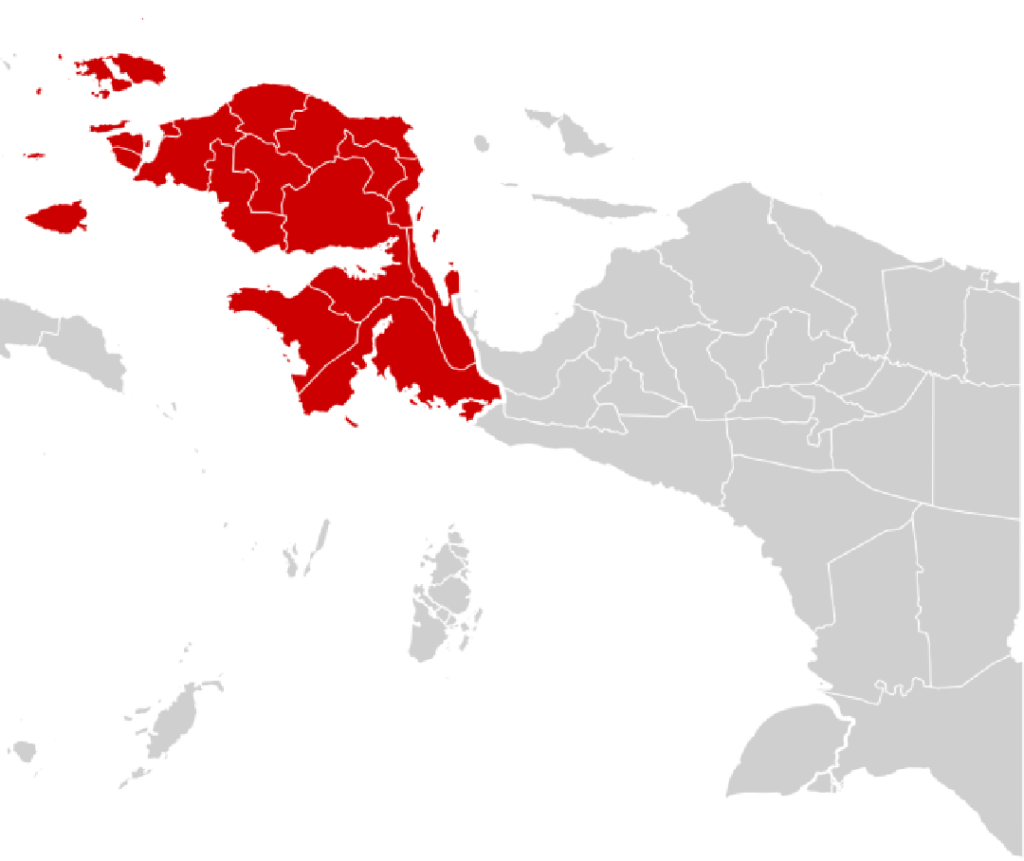In the remote hills and scattered coastal villages of Kepulauan Yapen, Papua, the flicker of electric light is more than just illumination—it’s a promise fulfilled, a future unlocked.
That promise comes from Indonesia’s Ministry of Energy and Mineral Resources (ESDM), now under the leadership of Minister Bahlil Lahadalia, who visited Yapen on 24 July 2025 to inaugurate newly electrified villages and affirm his commitment to equitable energy access. But the stakes are far greater than infrastructure alone. At the core of this mission lies a profound question: What happens when a child finally gets the light they need to learn at night?
From Childhood Darkness to National Mandate
For Minister Bahlil, this question is deeply personal.
“I was raised without electricity,” he told a gathering in Kampung Tindaret, one of the recently energized villages in Yapen. “I remember studying under kerosene lamps, inhaling smoke just to read. That’s why this isn’t just about electrifying villages—it’s about changing destinies.”
That sentiment now drives the national “Listrik Berkeadilan” (Equitable Electricity) program—an ambitious project aimed at ensuring that no village, however remote, is left behind in Indonesia’s energy roadmap. As of 2025, over 83,000 villages nationwide have received electricity, but Papua and its outer islands remain the final frontier.
Lighting Up Yapen: A Strategic Focus
The regency of Kepulauan Yapen, located in northern Papua, consists of islands and rugged inland terrain—beautiful, but logistically challenging. Many communities here have relied for years on six to twelve hours of power at best, provided by diesel-based microgrids or community generators.
That changed this year, when the Ministry of ESDM—through its rural electrification division and in partnership with PLN (State Electricity Company)—began distributing solar-powered battery systems (APDAL) to some of the most isolated communities in Yapen, including Teluk Ampimoi, Windesi, and Yerui.
Now, more than 500 households that previously went dark after sunset can study, cook, and gather with steady, renewable power.
Electricity and Education: A Powerful Equation
Why does this matter? Because in Papua, electricity and education are intertwined.
At one elementary school in Kampung Kairawi, newly installed power systems now support not only lighting but also digital learning tools, fan ventilation, and after-school tutoring sessions. Teachers report better attendance. Parents say their children read more. Even simple things—like charging phones or using projectors—have transformed how schools function.
“We’ve seen kids stay an extra hour to read,” said a local headmaster. “Electricity gave us time. Time to teach. Time to learn.”
Minister Bahlil emphasized this connection repeatedly during his visit. “If you want equal education, you need equal electricity. If one village has 24-hour power and another has none, their students start life from different lines.”
To reinforce this link, the ESDM Ministry also delivered educational aid during the visit: books, school uniforms, and digital equipment—all symbolic of how infrastructure investment can serve human development.
Microhydro Power for Remote Villages
For regions where extending grid lines remains too costly or physically impossible, the Ministry has turned to renewable microhydro power (PLTMH).
In collaboration with the Yapen Regency government, two microhydro plants—in Soromasen and Yobi—were inaugurated with a total investment of over Rp14 billion. These systems harness the natural flow of mountain streams to generate clean energy without large dams or environmental degradation.
“This is local power, for local people, using local resources,” said an ESDM engineer. “And it’s sustainable—these turbines will power schools, homes, and clinics for decades.”
Free Power, Fair Futures: The BPBL Program
Complementing the physical rollout of energy infrastructure is the Ministry’s BPBL (Bantuan Pasang Baru Listrik, Help with New Electricity Installation) program—a national subsidy for new electricity connections aimed at Indonesia’s poorest households.
Thousands of homes in Papua have benefitted from free installation of electrical meters, wiring, and basic light fixtures. For families that earn barely enough for daily necessities, this support can mean the difference between light and darkness.
The program represents energy justice—a policy philosophy that Minister Bahlil champions loudly. “Development isn’t just for Java or Sumatra. It’s for Yapen, for Biak, for Yahukimo, for every child who wants to dream beyond candlelight.”
A Region Ready for Progress
Local leadership in Yapen has embraced the electrification agenda with enthusiasm. Regent Benyamin Arisoy, who accompanied the minister during his July visit, emphasized that access to electricity aligns with the regency’s wider vision for free and quality education from elementary through high school.
“Our priority is our people—especially our youth,” said Arisoy. “We are building a future where every Papuan child has the tools they need, and electricity is step one.”
The regency is also preparing to launch a ‘Sekolah Rakyat’ boarding school, designed for underprivileged students from across Yapen. Built on a 10-hectare plot, the school will house 50 students in its first year, with expansion planned alongside continued electrification of nearby districts.
Powering the Nation from the Periphery
While Yapen is a compelling example, it also fits into a broader national narrative.
Indonesia’s geography—an archipelago of over 17,000 islands—makes electrification uniquely complex. But through a combination of on-grid expansion, off-grid innovation, and renewables, the Ministry of ESDM aims to reach 100% electrification by 2029.
In Papua alone, hundreds of villages remain unelectrified. Yet progress is accelerating. Since 2021, the electrification ratio in Papua has climbed steadily, thanks to coordinated funding, private-public partnerships, and community involvement.
Stories from the Field
In Kampung Tindaret, an elderly woman named Mama Maria wept as the first electric light flickered on inside her home. “For 60 years, I cooked in the dark. Now I can see my grandchildren do their homework.”
In a nearby village, a student named Thomas used his new access to electricity to recharge his school tablet—something he had never done before. “Now I don’t have to go to the sub-district just to charge,” he said. “It saves time, and I can study more.”
These are the stories that make electrification more than a statistic. They make it real.
The Road Ahead
Challenges remain. Many parts of Papua still lack reliable road access, making equipment delivery difficult. Natural hazards, from landslides to storms, frequently delay infrastructure deployment. And funding gaps persist, especially for long-term maintenance.
But the Ministry has signaled a long-term commitment, working closely with local governments and regional PLN units. Minister Bahlil himself vowed to return to Yapen to monitor progress—underscoring that this is not a ceremonial initiative but a structural shift.
Conclusion
In the soft glow of new lights across Yapen, one can see more than modernity. One can see dignity restored, futures rekindled, and a government striving to live up to its mandate: that every citizen, from Jakarta to Jayapura, deserves the same shot at success.
For the children of Yapen, electricity is no longer a dream—it’s a daily reality. And with it comes the light of learning, the spark of progress, and the warmth of hope.


